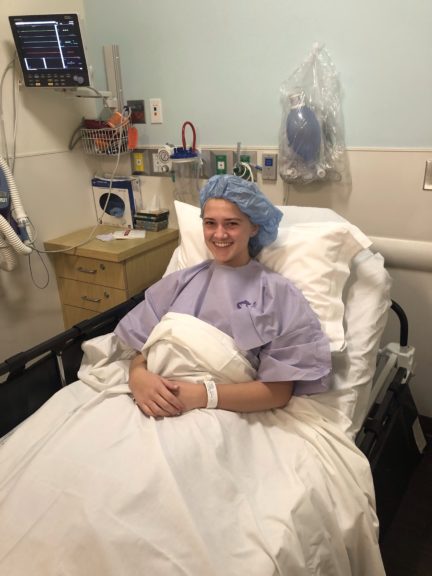For many children undergoing tonsillectomies at CHOC, gone are the weeks missing school, a liquid diet and powerful narcotic painkillers.
Instead, a new technique for tonsillectomies practiced at CHOC means patients return to school and a regular diet sooner and require only over-the-counter pain medication such as Tylenol.
More importantly, the risk for potentially life threatening post-operative bleeds – 3 to 8 percent in traditional tonsillectomies – and hospital readmissions drop dramatically when children undergo procedures using this technique.
During an intracapsular tonsillectomy, the surgeon deftly shaves away at the tonsil, leaving a small portion (the outer wall called the capsule) behind. In contrast, a traditional total tonsillectomy removes the entire organ, exposing raw muscle and blood vessels behind the tonsil, which increases pain and bleeding risk.
Due to the significant benefit to patients, the technique has become routine at CHOC. These physicians are working to raise awareness about this technique in the community, as well as with their physician peers nationwide.
Drs. Kevin Huoh and Nguyen Pham presented a joint lecture to otolaryngologists at the recent American Academy of Otolaryngology–Head and Neck Surgery Foundation’s annual meeting teaching an instructional course for other surgeons on this technique.
Drs. Huoh and Pham learned the intracapsular technique as fellows, but for years practiced the traditional tonsillectomy version they learned as residents, they said.
But a few years after joining CHOC, they made a change. Drs. Huoh and Pham lamented the number of patients complaining of pain after surgery; the number of narcotic pain prescriptions they wrote; and the number of patients returning to the hospital post-surgery with dehydration, pain and bleeding.
After largely switching to the intracapsular technique, they’ve had zero bleeds after more than 1,000 procedures – and, anecdotally, they have happier patients.
For example, Jenna Opp underwent the new procedure with Dr. Pham about nine months ago as a high school senior.

Her mother had also undergone a tonsillectomy as a teenager and prepared Jenna for the worst. But after the surgery, Jenna drank a smoothie and by that night, she enjoyed eggs and French toast for dinner. Two days later she was back in school and craving a hamburger.
The experience was an about-face from her mother’s memories of weeks of pain coupled with a steady oatmeal diet. And even better – after a lifetime of chronic bouts of strep throat, Jenna has been healthy ever since.

“They offered to do it the old way or the new way,” Jenna says. “They told me the new procedure is way less painful and only takes a couple of days for recovery. I was like, ‘I’m sold on that,’ and it was awesome.”
Here are some keys things to know about the intracapsular tonsillectomy technique:
- The tonsil regrowth rate following an intracapsular tonsillectomy at CHOC is 0.5 to 1%.
- The procedure takes the same amount of time as a traditional tonsillectomy – 30 to 45 minutes.
- Intracapsular tonsillectomy is growing in popularity in the United States. Elsewhere in the world, such as in Sweden and France, it’s the preferred method of tonsil removal.
- Usually children will require only over-the-counter pain medication such as Tylenol for a few days after surgery. Some children do not require any pain medication.
- There are no age restrictions for this procedure.
Learn more about referring a patient to CHOC’s otolaryngologists.




